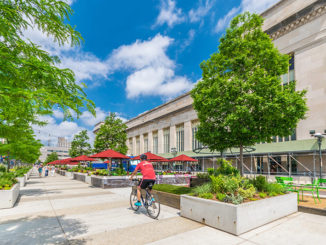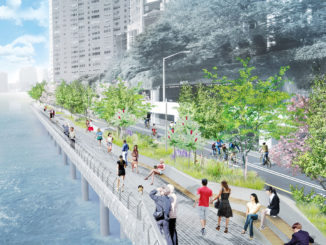The Camí de la Muntanya, in the valley of Sant Just Desvern, is a natural path between the city and the Collserola Natural Park, the largest green space in metropolitan Barcelona. This metropolitan area is a densely populated and complex environment, where reflection and action on design has yet to have successfully bridged the spaces between urban and green areas. Within this environmental context is where we find the Camí de la Muntanya Environmental Recovery project, the first major intervention in Collserola Natural Park, re-naturalizing the city-park limits employing distinctive Collserola design features.
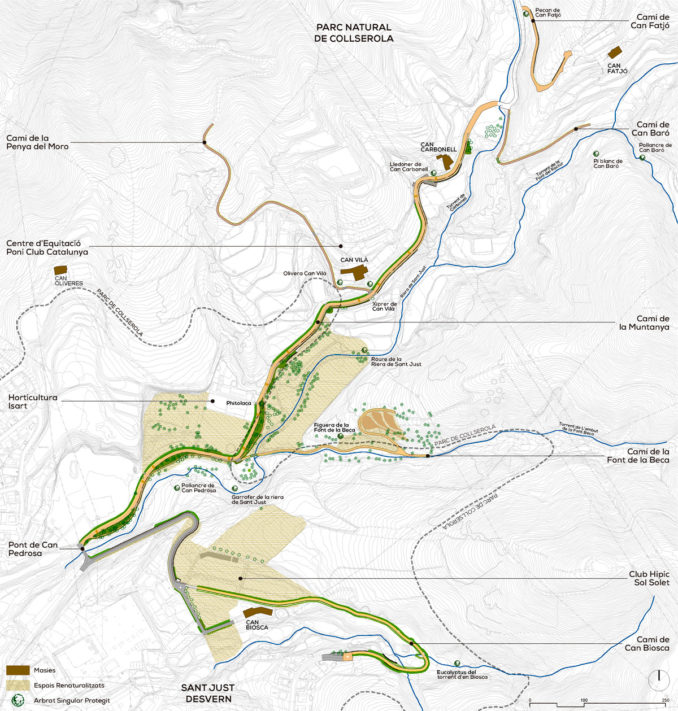

Over many years the invasion of its fragile environment by indiscriminate vehicle traffic, invasive activities, illegal construction and the unregulated dumping of waste had led to its degradation and the emergence of some activities and uses that had diminished the value of the Park-City threshold.

(c) A B Riera Arquitectes Associats

(c) A B Riera Arquitectes Associats
The intervention aims to halt and reverse this process of deterioration by re-evaluating and restoring the misplaced relationship between the park and the city. The project acts in an integrative and respectful way, to restore the degraded environment, protect and strengthen agricultural and natural systems and create new green areas for leisure. It is a low-impact intervention that pretends to restore the Camí de la Muntanya as a leisure place for people at the same time that keeps its use as a vehicle flow distributor, integrated into the natural environment of Collserola Park.
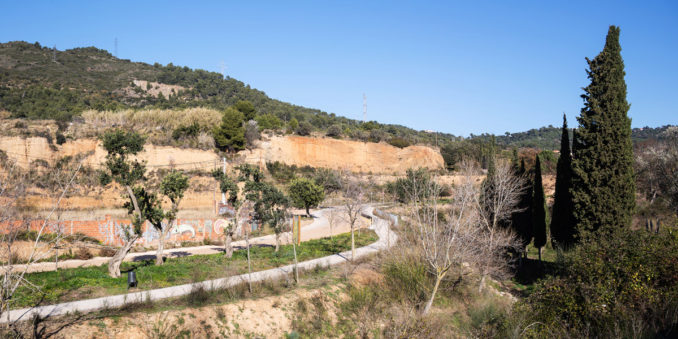
The environmental recovery consists of two main operations: the restoration of the path, pacifying its use and restoring its margins; and the re-naturalization of the environment, protecting, consolidating and maintaining the biodiversity and landscape.
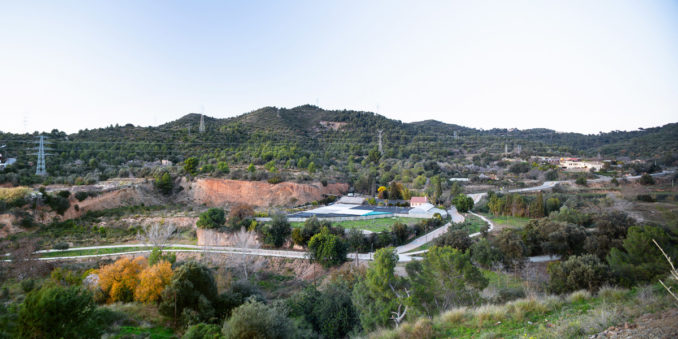
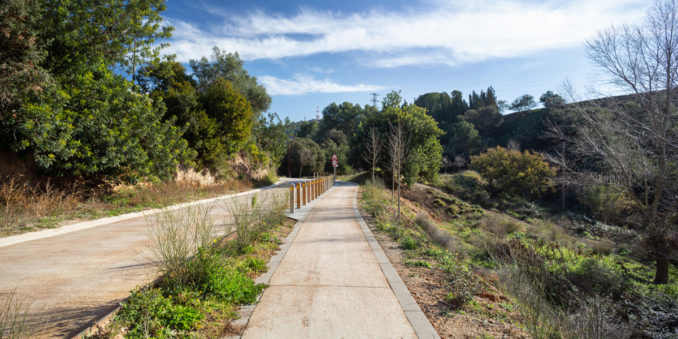
The path adapts its trace to the singularities of the site by splitting into a road and a pedestrian route. Thanks to this variable section the project adapts to the topography, intertwines with existing paths, and creates areas for leisure and contemplation. Its borders with the landscape are restored through re-vegetation, low-impact retaining wall systems (gabion walls and green wall slopes) and railings and fences that allow the free movement of wildlife.
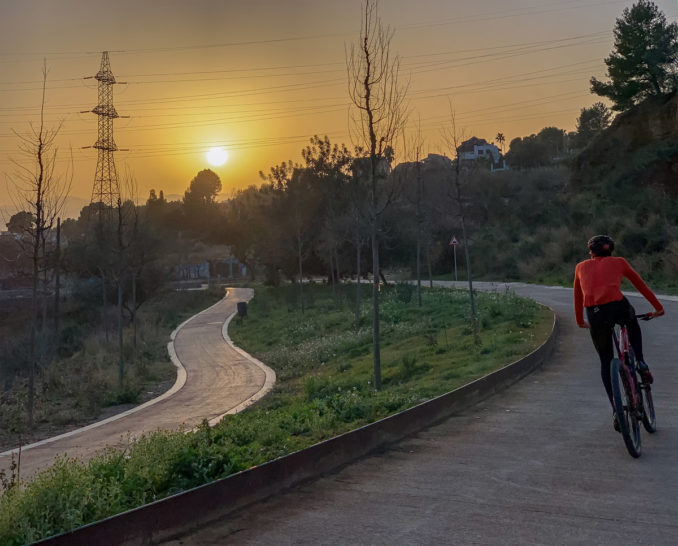
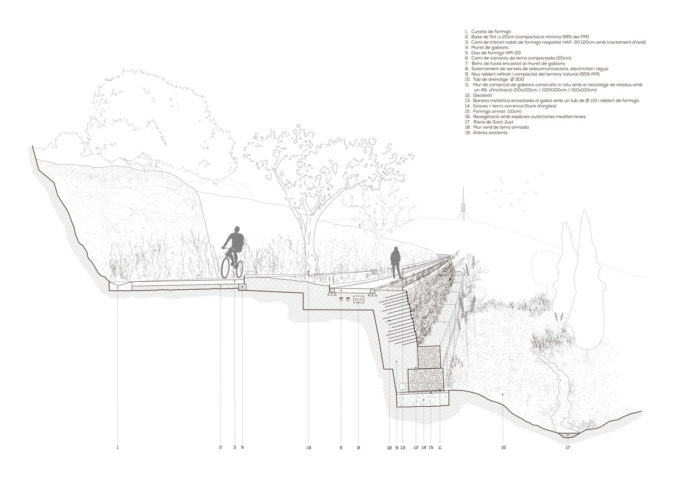
To re-naturalize the environment, all buildings built outside the urban planning area are demolished, marginal activities removed and the topography restored, achieving the regeneration of more than 5 ha of ground used for the restoration of the rural environment and the development of compatible activities in Collserola Park. The stream is cleared and reinforced by a breakwater, natural drainage spaces and low impact forks are created, and rainwater is redirected naturally into the main stream to regulate its flow.
The design is subordinated to the environment in order to reinforce and highlight its natural attributes, by using local colours and materials, respecting the existing vegetation, re-vegetating according to eco-maintenance criteria and considering the interaction with wildlife. The formal result is defined from the perspective of sustainability, optimization of resources and management criteria of the Collserola Park.
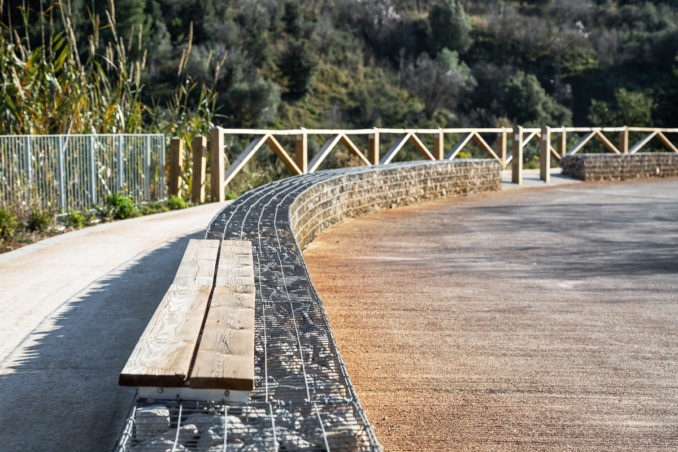
The project is reduced to a minimum, both in details and in materials, trying not to impose on territory: soil movements are solved within the same site; 12.000 m3 of waste rubble are reused and processed on-site to make sub-foundations, fillings and gabion walls; existing trees are respected as much as possible; electrical and telecommunication facilities from the surrounding farmhouses are buried; and artificial lighting is not used in order to avoid light pollution in this sensitive natural environment.
Camí de la Muntanya Environmental Recovery
Location: Passeig de la Muntanya, Sant Just Desvern, Barcelona, Spain
Designer: AB Riera
Design year: 2017
Year Built: 2019
Total Area: 10ha
Image Credits: As noted – (c) ADRIÀ GOULA PHOTO; (c) A B Riera Arquitectes Associats;
Text Credits: A B Riera Arquitectes Associats;

